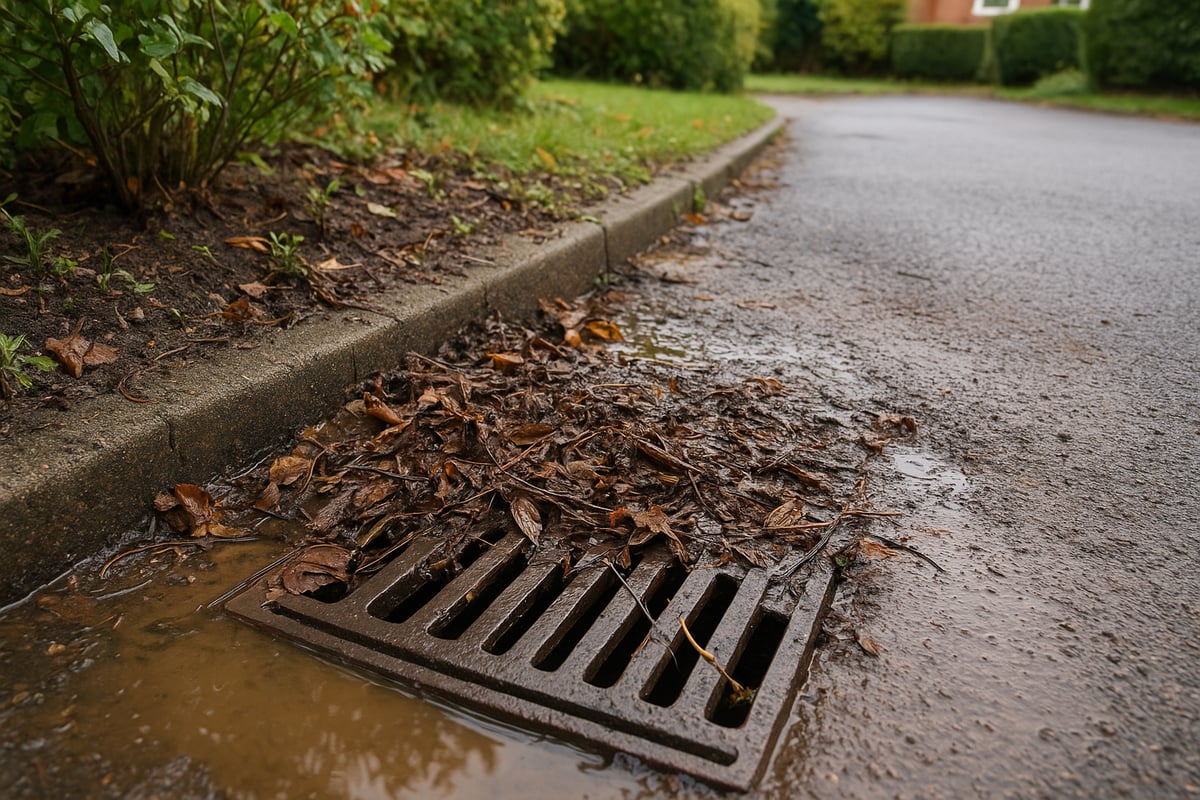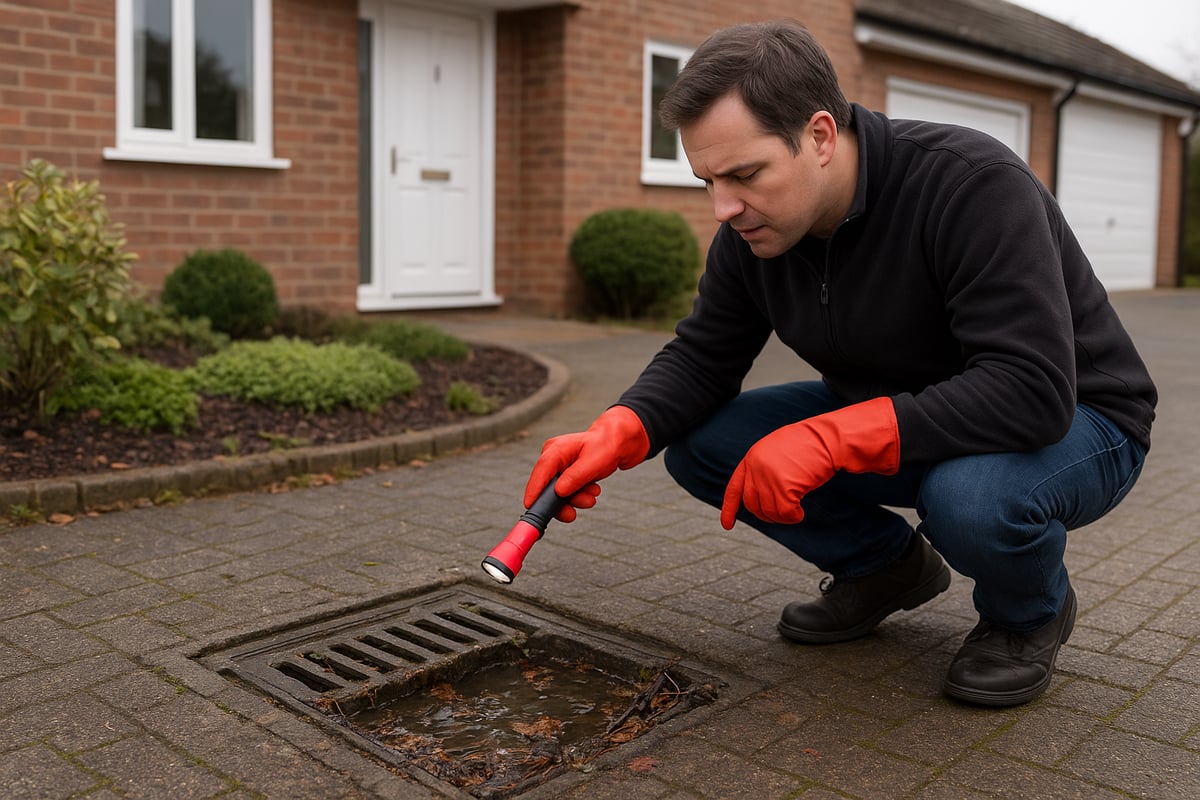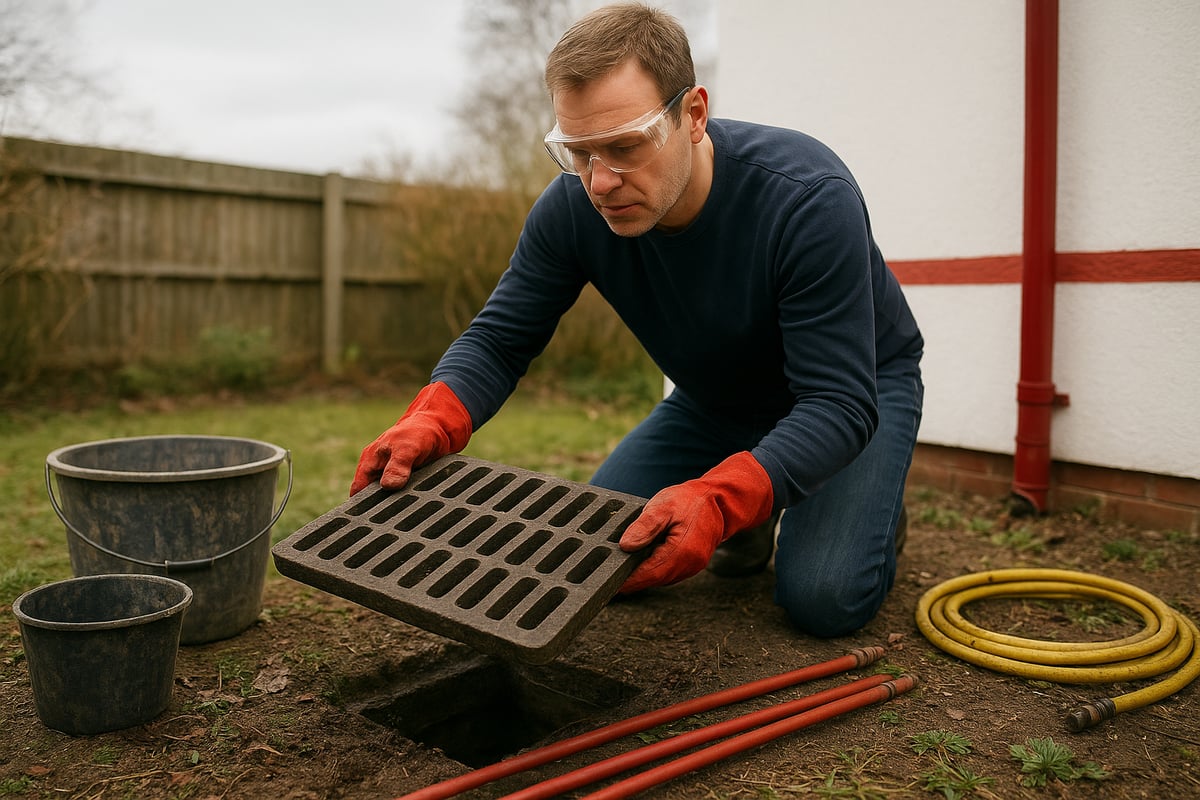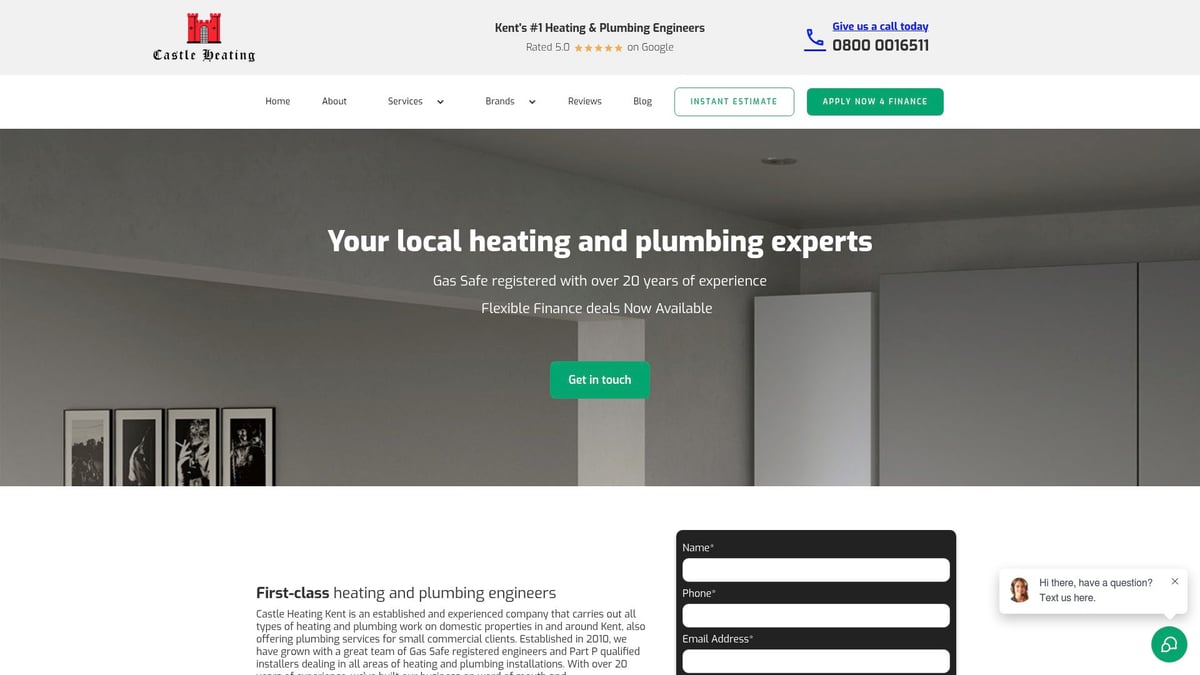Blocked External Drain Solutions: The Essential Guide 2025
Imagine stepping outside to find your garden flooded or a persistent unpleasant smell hanging in the air. These are just a few of the disruptions a blocked external drain can cause, leading to unexpected headaches and costly repairs.
This essential guide for 2025 is designed to help homeowners and property managers tackle the challenges of a blocked external drain with confidence. We bring you the latest, most effective solutions tailored to modern drainage issues.
Discover the common causes, warning signs, proven step-by-step fixes, preventative strategies, and expert advice on when to seek professional help. Take control of your property's well-being and enjoy peace of mind with practical, hassle-free solutions.
Understanding Blocked External Drains: Causes and Consequences
A blocked external drain can rapidly escalate from a minor nuisance to a major household crisis. Understanding what causes these blockages, and the consequences of ignoring them, is crucial for every homeowner or property manager. By recognising the risks early, you can help protect your property from costly and disruptive issues.

Common Causes of Blocked External Drains
Blocked external drain problems often stem from everyday activities and seasonal changes. The most frequent causes include:
- Build-up of leaves, twigs, and garden debris: These materials often collect in gullies and drain covers, especially after storms or during autumn.
- Grease, fat, and food waste: When poured down kitchen sinks, these substances can travel through pipes and solidify, leading to stubborn blockages in outside drains.
- Tree root intrusion: Roots naturally seek out moisture, and over time can break into underground drainage pipes, causing persistent blockages.
- Structural issues: Collapsed or cracked pipes, often due to ground movement or ageing infrastructure, can restrict water flow.
- Accidental disposal of non-flushable items: Wipes, sanitary products, and other materials not designed for drains can quickly lead to a blocked external drain.
- Silt, soil, and gravel: These are often washed in from driveways or nearby construction work, gradually filling drainage systems.
According to UK Water Industry statistics, there are over 300,000 drain blockages reported annually, with 80% linked to improper waste disposal. The scale and financial impact of these problems are highlighted in the Impact of Drain and Sewer Blockages Over Five Years, which details how widespread and costly these issues are for both homeowners and local authorities.
Blocked external drain cases are not just seasonal; they can occur year-round if preventative measures are not in place. Regular maintenance and mindful waste disposal play a key role in reducing the frequency of these problems.
Consequences of Ignoring Blocked Drains
Overlooking a blocked external drain can have severe repercussions for both your home and health. The most common consequences include:
- Localised flooding: Water pooling around foundations can weaken structures and cause damp problems.
- Unpleasant odours and health hazards: Stagnant water in drains attracts pests and breeds bacteria, creating a risk for households.
- Property damage and subsidence: Prolonged exposure to excess moisture can lead to costly structural repairs.
- Legal responsibilities: UK drainage law requires property owners to maintain their drains, with potential penalties for neglect.
- Escalating repair costs: What starts as a minor blocked external drain can lead to major works if left unresolved.
For example, a homeowner in Kent ignored early signs of drain issues for several months, resulting in over £2,000 of repair costs when the problem ultimately caused significant water damage. Such scenarios are more common than many realise, reinforcing the importance of prompt action when a blocked external drain is suspected.
Ignoring the warning signs can turn a manageable situation into a disruptive and expensive ordeal. Proactive attention and timely intervention are the best defences against these risks.
Early Warning Signs and How to Spot a Blocked External Drain
Spotting a blocked external drain early can save you from expensive repairs and property damage. Recognising the first signs is crucial for homeowners and property managers who want to avoid disruption and maintain a safe, hygienic environment. Below, we outline the main warning signals and provide actionable steps to help you identify issues before they escalate.

Visual and Sensory Indicators
The earliest signs of a blocked external drain often present themselves through sight and smell. Homeowners should be vigilant for the following changes around their property:
- Water draining slowly or pooling around outdoor gullies.
- Inspection chambers or manholes that overflow during rainfall.
- Persistent patches of dampness or waterlogged areas in lawns.
- Unpleasant odours near drain covers or external pipework.
- Gurgling or bubbling noises coming from external drains.
Noticing these symptoms can be the first step towards preventing more serious problems. A blocked external drain can quickly escalate, so prompt attention is key. If you observe multiple indicators at once, the problem may be more severe than it initially appears. Early detection empowers you to act before damage occurs.
Monitoring and Inspection Tips
Routine inspection is the best way to catch a blocked external drain before it causes major issues. Consider these practical tips:
- Check drain covers regularly for standing water or accumulated debris.
- Use a torch to peer into accessible pipes for visible obstructions.
- Observe local wildlife, as stagnant water may attract pests or birds.
- Monitor for changes after heavy rain or gardening activity.
Proactive monitoring can help you avoid costly repairs. According to Thames Water, early intervention can reduce repair costs by up to 60 percent. For persistent or unclear issues, seeking professional drainage services in Kent ensures a thorough assessment and targeted solution. Staying alert to small changes is essential in maintaining healthy drains and protecting your property.
When to Investigate Further
Some situations require immediate investigation to prevent a blocked external drain from worsening. Take action if:
- Several warning signs appear at the same time.
- There has been recent heavy rainfall or significant gardening work.
- Internal drains also begin to show signs of blockage.
A blocked external drain can affect multiple areas of your home, including internal pipework. If you suspect a major blockage, do not delay. Early investigation helps prevent localised flooding and expensive repairs. It also ensures your property remains compliant with drainage regulations. When in doubt, consult an expert to assess the situation and recommend the best course of action for your blocked external drain.
Step-by-Step Solutions: How to Unblock an External Drain Safely
A blocked external drain can quickly escalate from a minor inconvenience to a major property issue if left untreated. By addressing the problem systematically, you can often restore flow and avoid costly repairs. Let us guide you through each essential step, ensuring both safety and effectiveness for every homeowner or property manager tackling a blocked external drain.

Preparation and Safety Precautions
Before starting any work on a blocked external drain, prioritise your safety and gather the right equipment. Drains can contain hazardous materials, sharp objects, or even toxic gases, so preparation is critical.
Essential safety gear includes:
- Heavy-duty waterproof gloves
- Safety goggles or glasses
- Waterproof boots and protective clothing
- Face mask if odours are strong
Tools checklist:
- Drain rods with attachments
- Drainage keys or a sturdy screwdriver
- Buckets for debris
- Garden hose or pressure washer
- Torch for visibility
Ensure the area around the blocked external drain is free from pets, children, and bystanders. Always check the weather, as working in heavy rain increases risk. If you feel unsure about any part of the process, consider stopping and seeking professional advice.
Step 1: Remove Surface Debris
Begin by clearing any visible debris from around the blocked external drain cover. This step helps prevent further material from entering the drainage system during cleaning.
- Use a garden trowel or gloved hands to lift leaves, twigs, soil, and rubbish.
- Place all removed material in a bucket for proper disposal.
Pay close attention to grates and mesh covers, which can trap debris and cause water to back up. Removing surface obstructions is often enough to resolve minor blockages, especially after storms or heavy leaf fall. Repeat this process regularly to prevent a blocked external drain from recurring.
Step 2: Open the Drain Cover Safely
To access the actual blockage, you will need to open the drain cover. This step requires care, as covers can be heavy and sometimes release unpleasant odours or gases.
- Use a drainage key or a strong screwdriver to gently lift the cover.
- Stand to the side and allow any gases to dissipate before looking directly into the chamber.
- Shine a torch into the opening to inspect for visible blockages or standing water.
Never force a jammed cover, as this can cause injury or damage. If the cover will not budge, it may signal a more severe blocked external drain, possibly requiring professional intervention.
Step 3: Physical Removal of Blockage
Once the drain is open, physical removal is usually the most effective way to address a blocked external drain. Drain rods are essential for reaching and dislodging clogs.
- Assemble your drain rods, ensuring each section is securely connected.
- Insert the rods gently into the drain, rotating clockwise as you push forward. This prevents the rods from unscrewing inside the pipe.
- Apply steady, even pressure to break up the blockage. Avoid forcing the rods, as this can damage pipes.
Homeowners report a 70% success rate with manual rodding for minor blockages. If you encounter resistance or the rods become stuck, stop and reassess the situation to avoid worsening the blocked external drain.
Step 4: Flush the Drain
After breaking up the main obstruction, flushing the system helps ensure all debris is removed from the blocked external drain.
- Attach a garden hose or use a pressure washer to send water through the cleared pipe.
- Run water for several minutes, checking for proper flow and any signs of water backing up.
- If the blockage persists, repeat the rodding and flushing process, but do not overexert the pipes.
For particularly stubborn blockages, high-pressure jet washers can be effective but should be used with caution. If you lack suitable equipment or experience, consider seeking professional support to avoid damaging the drain.
Step 5: Clean Up and Reassemble
Once the blocked external drain is cleared, proper clean-up is vital for both safety and ongoing maintenance.
- Replace the drain cover securely, ensuring it sits flush with the surrounding surface.
- Dispose of all debris in accordance with local council guidelines, never allowing waste to re-enter the drainage system.
- Clean and disinfect all tools and safety gear before storing them away.
A thorough clean-up reduces the risk of future blockages and ensures the area remains safe for everyone. Document any recurring issues, as repeated blockages may indicate underlying structural problems within the drain.
When to Stop and Call a Professional
Not every blocked external drain can be resolved with DIY methods. Knowing when to call a qualified drainage expert is crucial for protecting your property and health.
Contact a professional if:
- The blockage persists after several attempts or returns frequently.
- You detect signs of structural pipe damage, such as cracks or subsidence.
- There are strong chemical odours, hazardous waste, or evidence of collapsed pipes.
- The blockage affects multiple drains or shared systems.
Attempting to fix complex or severe issues without the right expertise can cause further damage and increase costs. If you are unsure, it is wise to contact drainage experts for a professional assessment and a guaranteed solution. Acting promptly minimises disruption, prevents property damage, and ensures peace of mind for you and your household.
Advanced Solutions and Tools for Persistent Blockages
Dealing with a blocked external drain can quickly escalate from a minor inconvenience to a major headache, especially if standard DIY methods fail. In these cases, advanced solutions and professional tools become essential to restore proper drainage and prevent costly damage. Let us explore the most effective techniques and technologies available for persistent blockages in 2025.
High-Pressure Water Jetting
High-pressure water jetting is a leading solution for stubborn blockages that resist manual rodding. This method uses powerful streams of water to break up compacted debris, grease, and even small tree roots inside the pipes. When faced with a blocked external drain that will not clear easily, jetting can often restore flow within minutes. Safety is crucial, so only trained individuals should operate this equipment, as the intense water pressure can cause injury or damage if misused. For most homeowners, hiring a professional is safer and more cost-effective than renting jetting equipment.
CCTV Drain Surveys
CCTV drain surveys use miniature cameras inserted into the pipework, allowing experts to visually inspect every inch of a blocked external drain. This technology is invaluable for diagnosing hidden problems like root intrusion, collapsed pipes, or complex obstructions that would otherwise remain undetected. A real-world example involves a Maidstone property where repeated blockages were resolved only after a CCTV survey pinpointed a collapsed clay pipe. These surveys not only save time but also reduce unnecessary excavation, protecting both your property and your budget.
Chemical Drain Cleaners: Pros and Cons
Chemical drain cleaners are sometimes used to tackle a blocked external drain, but they come with significant risks and limitations. Biodegradable options are less harsh on pipes and the environment, while caustic cleaners can be highly effective but may corrode older pipework or harm local wildlife. In the UK, legal restrictions apply to certain chemicals due to environmental impact. Always read labels and never mix products, as this can create hazardous fumes. For persistent or recurring issues, chemical cleaners are rarely a long-term solution.
Mechanical Augers and Power Rods
Mechanical augers and power rods offer an alternative for severe blockages in a blocked external drain, especially when physical rodding and jetting are not sufficient. These powered tools use rotating cables or rods to cut through tough obstructions, including tree roots and compacted silt. While effective, they require specific safety training, as improper use can damage pipes or cause personal injury. DIY users should proceed with caution and consider professional help if they are unfamiliar with the equipment.
Trenchless Repair and Pipe Relining
When a blocked external drain is caused by cracked or collapsed pipes, trenchless repair and pipe relining offer modern, minimally invasive solutions. These methods avoid the need for major excavation by inserting a resin-impregnated liner into the damaged section, which then hardens to form a new, durable pipe within the old one.
| Repair Method | Typical Cost (UK) | Disruption Level |
|---|---|---|
| Traditional Digging | £1,500-£3,000 | High |
| Trenchless Relining | £800-£2,000 | Low |
Trenchless techniques save time, reduce mess, and often cost less than traditional repairs.
Professional Drainage Services
For persistent or complex cases of a blocked external drain, engaging a professional drainage company is often the best course of action. Specialists offer a full suite of services, including emergency call-outs, CCTV surveys, jetting, and trenchless repairs. Costs vary based on the extent of the blockage and the chosen solution, but reputable firms provide transparent pricing and written guarantees. To understand the quality of service and customer satisfaction, it is wise to review Customer reviews for drain unblocking before choosing a provider. Professional intervention ensures not only a cleared drain but also peace of mind that the issue will be properly resolved.
Preventative Maintenance: Keeping External Drains Clear Year-Round
A blocked external drain rarely happens without warning. Consistent preventative maintenance is the most effective way to keep your drainage system free-flowing and your property protected. By adopting a routine approach, you can avoid the stress, mess, and expense that come with unexpected blockages.
Routine Cleaning and Inspection
Regular checks are the first line of defence against a blocked external drain. Inspect drain covers and gullies at least every two months. Remove any visible leaves, twigs, or silt by hand or with a scoop.
Install leaf guards or mesh covers to prevent garden debris from entering the system. These simple devices can reduce blockages significantly. Watch for standing water around drain covers, as this often signals early problems. Addressing minor build-up now helps you avoid much bigger issues later.
Responsible Waste Disposal
How you dispose of everyday waste can make or break your external drain health. Never pour fats, oils, or greasy food scraps down the kitchen sink, as these can solidify and travel into outdoor pipes. Always place wipes, sanitary products, and other non-flushable items in the bin, not the toilet.
The impact of improper disposal is not only local. According to the Water Quality Report 2025, avoidable sewage and drain blockages cost the UK millions each year. Responsible habits protect your home and the wider environment from the consequences of a blocked external drain.
Landscaping and Garden Management
Thoughtful garden planning can prevent a blocked external drain caused by roots and soil. Plant trees and large shrubs away from underground drainage lines to reduce the risk of root intrusion. Use gravel or permeable paving on driveways and paths to limit soil and silt run-off during heavy rain.
Keep lawns and planting beds tidy, especially near drainage points. Preventing excess soil, mulch, or plant debris from washing into drains is a simple step with long-term benefits.
Seasonal Preparation
Each season brings unique challenges for keeping your drains clear. In autumn, clear fallen leaves from gutters and gullies regularly. After storms, check for new debris that may have accumulated overnight.
Winter calls for vigilance against freezing water in pipes. Ensure all outdoor drains are free from blockages before cold weather sets in. Good flow during winter helps prevent cracks and bursts that could cause a blocked external drain in the spring.
DIY Maintenance Tools
Having the right equipment on hand makes preventative maintenance easier. Essential tools include drain rods, leaf scoops, a garden trowel, and a pressure washer for stubborn debris.
Consider installing a simple leaf guard, which can cut blockages by up to 40 percent. Regularly using these tools allows you to spot and resolve issues before they turn into a fully blocked external drain.
Education and Awareness
Preventative maintenance is most effective when everyone plays their part. Share drain care tips with neighbours, especially if you have shared drainage systems. Stay informed about local recycling facilities and council guidance for waste disposal.
Public awareness is growing, but more can be done. The UK Drainage Habits Survey 2025 highlights the link between household habits and the rise in blocked external drain reports. By staying proactive and spreading knowledge, you help create cleaner, safer communities.
When to Call a Professional: Choosing the Right Drainage Expert
Dealing with a blocked external drain can be daunting. Sometimes, DIY solutions are not enough or the problem is more serious than it seems. Knowing when to call a professional is crucial to protect your property and avoid escalating costs.
Assessing the Severity of the Blockage
Not every blocked external drain requires immediate professional help. However, certain signs should prompt you to seek expert assistance. If you notice water pooling around multiple drains, recurring blockages despite repeated attempts to clear them, or if your neighbours are experiencing similar problems, it is time to act.
Persistent issues with a blocked external drain can indicate deeper concerns, such as collapsed pipes or root intrusion. If you find any structural damage, sewage backflow, or a foul odour lingering after cleaning, do not delay contacting a drainage specialist. Prompt action can minimise property damage and health risks.
What to Look for in a Drainage Professional
Selecting the right expert for your blocked external drain is essential. Start by checking for proper qualifications, such as NADC or WaterSafe certification. Look for professionals with extensive local experience, as they understand regional drainage systems and common causes of blockages.
Customer reviews and transparent pricing are also crucial. A reputable company should provide clear estimates, explain their methods, and offer service guarantees. Professionalism and prompt communication are strong indicators you have chosen the right partner for resolving your blocked external drain.
Services Offered by Drainage Experts
A professional drainage company offers a wide range of services to tackle any blocked external drain. These include emergency call-outs, CCTV drain surveys, high-pressure water jetting, and repair work for damaged pipes. Experts can also provide advice on long-term drainage improvements to prevent future issues.
Many companies offer maintenance packages, regular inspections, and tailored solutions for specific property types. Whether you face a minor blockage or need a comprehensive system overhaul, drainage professionals have the tools and knowledge to restore flow efficiently.
Castle Heating Kent: Trusted Plumbing and Drainage Solutions in Kent
When it comes to a blocked external drain, choosing a trusted local expert makes all the difference. Castle Heating Kent offers a comprehensive range of drainage solutions, including unblocking, CCTV surveys, and emergency plumbing services for homes across Kent.

All engineers are Gas Safe registered and Part P qualified, ensuring both safety and compliance. With over 20 years’ experience and a five-star reputation, Castle Heating Kent stands out for its professionalism and effectiveness. To learn more about their qualifications and commitment to quality, visit their About Castle Heating Kent page.
Costs, Guarantees, and Warranties
Understanding the costs associated with a blocked external drain helps you budget effectively. On average, professional drain unblocking in the UK ranges from £80 to £250, depending on the severity and location. Emergency call-outs and complex repairs may cost more.
Always request a written guarantee on any work performed. Reliable drainage companies will offer warranties for repairs and provide clear terms on what is covered. This approach protects you from unexpected expenses and ensures peace of mind when dealing with a blocked external drain.
| Service Type | Typical Cost | Guarantee Provided |
|---|---|---|
| Standard Unblocking | £80–£150 | Yes |
| CCTV Survey | £100–£250 | Yes |
| Emergency Call-Out | £150–£300 | Varies |
| Pipe Repair/Relining | £200+ | Yes |
Questions to Ask Before Hiring
Before hiring a professional to resolve your blocked external drain, ask key questions to ensure transparency and quality. Inquire about any hidden fees, call-out charges, or additional costs for equipment use. Clarify what methods and tools will be used to address the blockage.
Ask how soon the work can be started and completed. If your situation is complex, confirm whether a CCTV survey will be provided. These questions help you make an informed decision and avoid unpleasant surprises during the repair process.
Legal and Insurance Considerations
Homeowners are legally responsible for maintaining and repairing a blocked external drain within their property boundary. Check your home insurance policy to see if drain repairs are included, as some policies offer coverage for accidental damage or emergency call-outs.
Landlords must ensure external drains are in good working order for tenants, while tenants should report issues promptly. Compliance with environmental regulations is also critical. For further context on the importance of drainage maintenance and environmental standards, you can refer to the Water and Sewerage Companies Environmental Performance Report 2024.
Understanding your responsibilities and the broader regulatory framework helps you manage a blocked external drain responsibly and proactively.
After reading about the causes, warning signs, and effective solutions for blocked external drains, you now have a clear plan to protect your property and avoid costly repairs. But if you ever feel unsure or face a stubborn blockage, remember that expert help is just around the corner. With over 20 years of experience and a reputation for reliable, professional service across Kent, we’re committed to keeping your home safe, dry, and trouble free all year round. You deserve peace of mind—why not take the next step and Keeping Homes in and around kent Warm, Dry & Flowing Book with castle heating kent?

